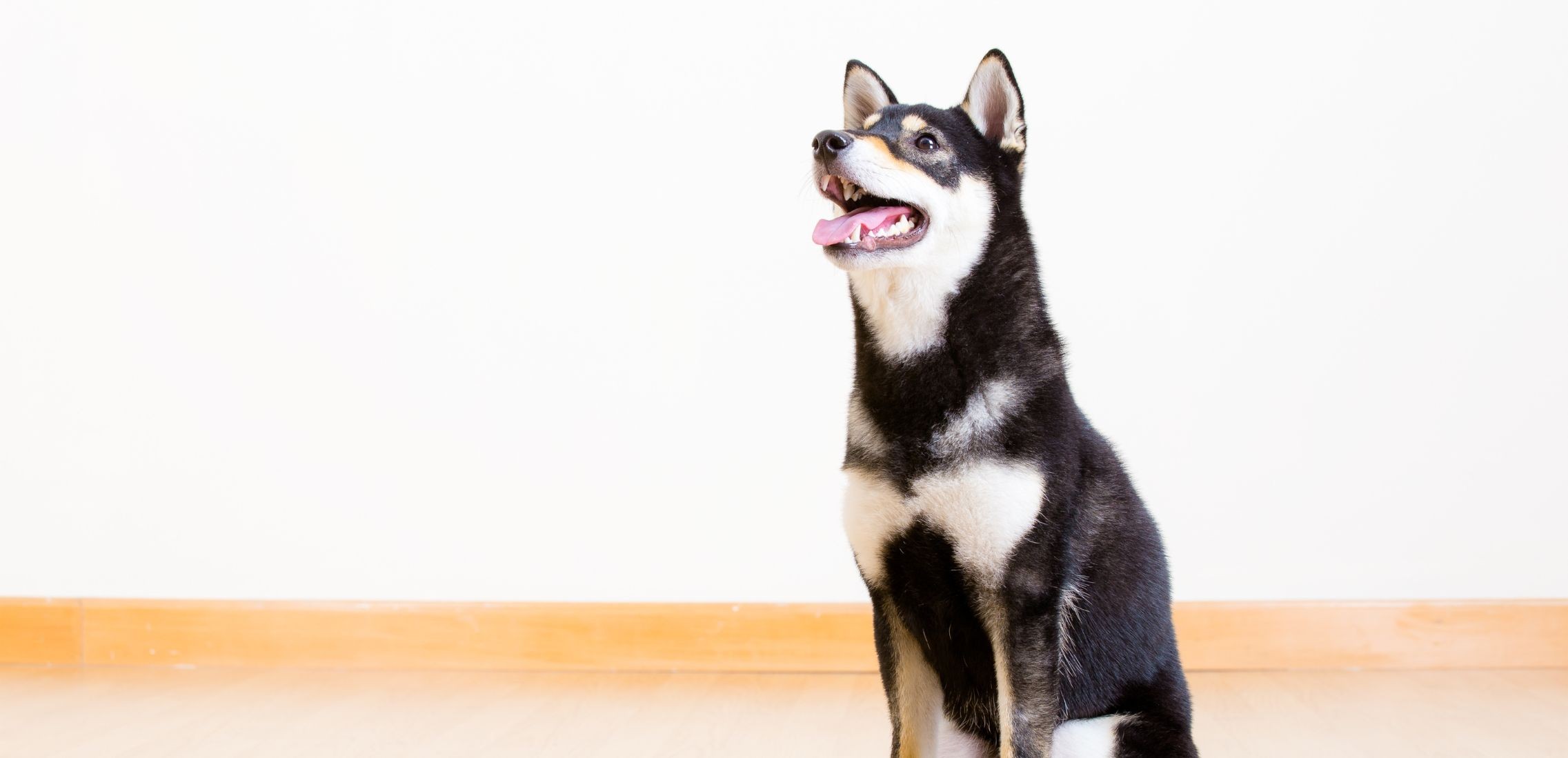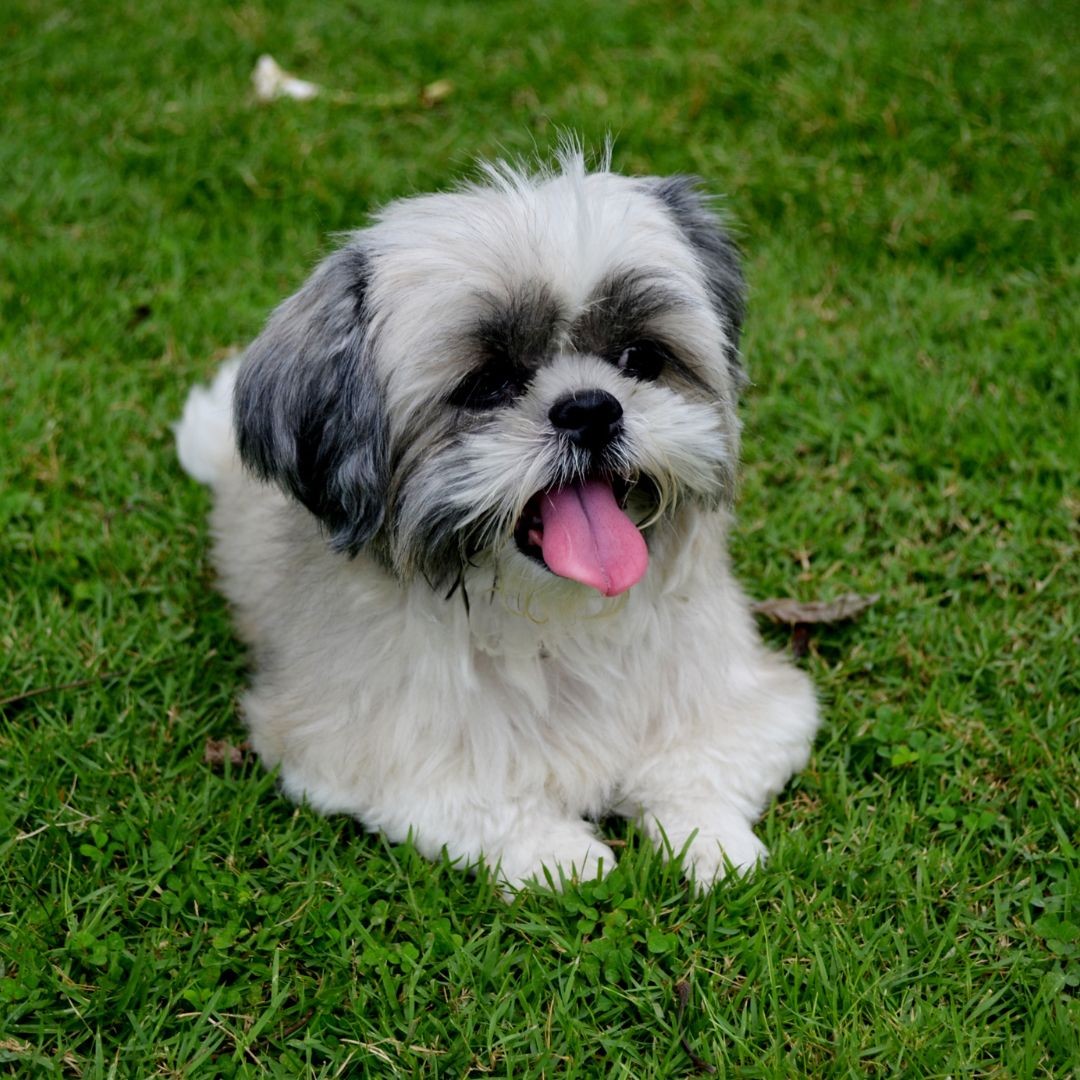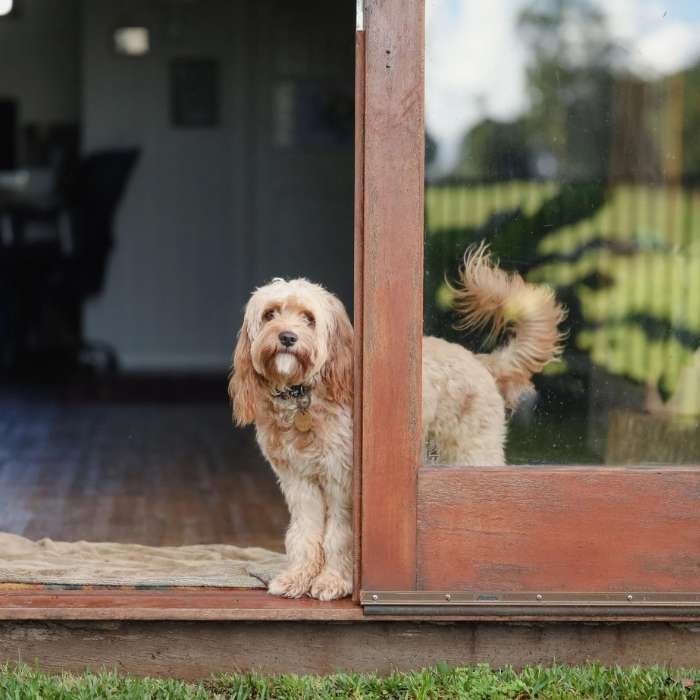Your Cart is Empty
Get Up To 35% OFF & Free Delivery
Get Up To 35% OFF & Free Delivery
Get Up To 35% OFF & Free Delivery

If you’re wondering how to teach a dog to stay, then you’re in the right place. Whether you've got a playful puppy or an older rescue, any dog can learn the crucial "stay" command with patience and positive reinforcement.
It’s a particularly important skill to teach any dog, as it can be the difference between life and death in more extreme circumstances. But more importantly, it can make taking your dog out in social situations much more enjoyable and less stressful too.
So are you ready to learn how to teach your dog to stay? Then let’s get started.
Teaching a dog to stay is a fundamental skill, as proper dog etiquette requires teaching pups to stay put when needed. This ensures they don’t run into harm’s way or are kept safe even when your focus isn’t on them; allowing you to maintain control over your furry friend no matter what’s going on around you. The 'stay' command is used for longer durations – sometimes even up to an hour – while 'wait' is typically for shorter, temporary pauses.
The stay command can be taught independently or as part of other commands like sit, down, and stand. For example, teaching your dog to 'stand' and then 'stay' helps them learn to hold a standing position, which is useful in comprehensive obedience routines.

The stay command is one of the most valuable tools many dog owners can have in their training toolkit. It’s not just about asking your dog to sit or lie down – it’s about teaching your dog to remain in that position, no matter what’s happening around them, until you give a clear release word. This level of self control is essential for safety, good manners, and peace of mind in a variety of circumstances.
When you teach your dog to stay, you’re really asking them to hold a specific position – whether it’s a sit or a down position – until you give them permission to break. The stay cue can be paired with a hand signal, such as a flat palm held out in a “stop” gesture, and a verbal cue like “stay.” This combination helps your dog understand exactly what you expect.
A crucial part of the stay command is the release word. The release word means your dog is free to move out of the stay and break position. Choose a word that you don’t use often in everyday conversation, like “okay” or “free,” so your dog doesn’t get confused. Always use the release word in a cheerful, upbeat tone to let your dog know they’ve done a great job. For example, if you’re teaching your dog to stay while you set down their food bowl, the release word is the signal that it’s finally time to eat.
To help your dog master the stay command, start in a quiet area of the house with minimal distractions. Ask your dog to sit or lie down, give your stay cue and hand signal, and reward them for holding the position for just a few seconds. Gradually work on increasing the duration – add a few more seconds each time your dog succeeds. If your dog breaks the stay, simply encourage them to return to the correct position and try again, always keeping the experience positive and stress-free.
As your dog gets better at staying, you can begin to add distance by taking a step or two away, and then gradually increasing the length of your absence. Practice in different locations, like the yard or during a walk, and introduce distractions to help your dog generalize the behavior. Remember to reward your dog with treats, praise, or even a favorite game when they do a good stay.
Most dogs can learn the stay command with patience, consistency, and lots of positive reinforcement. By following the above steps and making practice sessions fun, you’ll teach your dog to stay reliably and respond to your release command every time. This not only strengthens your bond but also gives you a sense of control and confidence in any situation.

Our top tool for training a dog to stay: high value treats.
Grab some seriously tasty rewards like cooked chicken, hot dogs, or smelly cheese to capture your pup's attention.
And here are some tips for how to use rewards effectively:
Try to use treats that your dog doesn’t have as regularly - i.e. more “special” tidbits of food like these examples of high-value dog treats.
Vary your treats, too, because if your dog gets bored with one treat, the likelihood is that they’ll soon stop paying attention. So remember to use high-value treats and rotate them when needed.
Make sure you have your treats readily accessible, so carry a treat pouch. It'll be your best friend during training sessions.
When your pup gets bored with treats, you can reward with play or do a combination of both. That way, your puppy doesn't know if they're getting a little nugget or a little pat on the head with some love. Always keep them thinking!
As you start becoming successful with longer “stay” durations, this is when you can phase out frequent treating. Add a little tug of war or fetch as a reward for their sit/stay. But always reward periodically, so they never know what they're going to get.


Begin training in a quiet, distraction-free room where your dog already knows the 'sit' or 'down' commands.
Begin by giving your dog the 'dog sit' command and have your pup sit while you feed them treats for making eye contact. Wait to use any commands – just reward them for holding that sit while looking at you. This gets them used to the act of staying focused.
Introduce the stay command only after your dog can hold their sit for at least 15 seconds.
Next, introduce a hand signal (like your palm facing toward your pup) and a voice cue like "stay" when they're sitting and focused on you. Pair it with treats so they associate staying = tasty rewards.
To add duration to your dog's stay command, slowly increase how long they must remain in position before getting a treat. Duration refers to how long the dog remains still; start with just 1–2 seconds before rewarding. Initially, reward your dog immediately after 1-2 seconds while they remain in position. You want to set them up for success, so go at their pace. If they break the stay, calmly restart. Some dogs pick it up quicker than others.
Once they start getting the hang of those brief stays, increase to a couple more seconds before rewarding. Gradually work up to longer stay durations.


Use a release word to let them know it's okay to move out of the stay. This can be something like "free" or "okay." Think of a word you don't say very often so your dog doesn't get confused and break the stay prematurely. Be mindful when choosing your release word.
The key is starting small by asking for just 1-2 second stays at first. Then, build up the duration incrementally as they master each step. Having a clear release cue prevents confusion.
With a solid stay duration, introduce the 'one step' concept: after asking your dog to stay, take just one step away from them. Follow the one-step rule by taking only a single step back during this stage, then immediately return to reward your dog. This helps reinforce controlled behavior and reliable command response. Once your pup is comfortable with this, start moving away tiny steps at a time while your pup holds the stay. Staying while you move to another room? Jackpot! But take this stage in baby steps, rewarding for smaller distances before gradually increasing.


Time to bring on the distractions! Start small with minor distractions like a ball rolling on the floor or kids walking around in front of your pup while you work on the stay. Make sure your dog does not jump or break the stay when distractions are present – reinforce calm behavior and use a release word to let them know when they can move.
Then gradually work up to bigger rewards and temptations.
Include things like having someone enter the room, dropping food on the floor while giving the “stay” command, or ringing the doorbell while they hold that stay position. Those are really going to test your dog’s training! If your dog has trouble with distractions, don’t worry – this is normal and just means you need to practice more gradually. If your dog breaks their stay, it is often because the trainer is asking for too much too soon.
Have family members get involved creating diversions by playing, walking around, making noise. Slowly raise that difficulty level, but don’t go from 0 to 100 right away. You want to set your puppy up for success.
Start with those small distractions they can handle, then incrementally work your way up to the bigger chaos and temptations. That controlled increase will solidify their ability to stay focused no matter what’s going on around them.
Now, your pup is ready to put that training into action! Have them stay while you answer the door, cook dinner, or run quick errands around the house. The key is practicing the stay in real-world situations.
Once you've mastered these tips inside, it's time to take it outdoors - and the possibilities are endless as you continue your successful dog training journey. Practice stays at the park, on hiking trails, and really anywhere with distractions.
Go ahead and have them stay while you grab the mail, chat with a neighbor, or set up for a picnic. The more you can integrate the stay into your daily life and outings, the more reliable that training will become.
The possibilities are endless for putting their new skills to the test!


First and foremost, make it fun! This will help your pup to better engage with training sessions. Remember to maintain a calm demeanor when praising or rewarding your dog – this helps them stay relaxed and focused during training.
Here are some additional fun tips for training your dog to sit and stay:
Use the “sit/stay” command before going for a walk if your dog is really anxious to get moving. Having them stay and control themselves first is good practice.
Another fun option is to have them sit and stay before you can cross every street corner on your walk. It keeps them engaged and thinking.
Ever played hide-and-seek with your pup? Once they’ve mastered longer duration stays, you can actually hide while they hold the stay, then release them to find you!
You can also use the stay as a warm-up before playtime or a game of tug or fetch after holding it. Keeping things fun and mixing it up reinforces their training.
A solid 'stay' command is beneficial for good manners and household obedience, making tasks like grooming and answering the door much easier.
The key is getting creative and incorporating the stay into activities your dog loves, like walks, games, and playtime. It reinforces the command in a positive way they enjoy rather than it feeling like a boring drill.


Keep sessions short and frequent. Dogs have limited attention spans.
Be patient - every dog learns at their own pace.
For high-energy pups, try having a good play session first to get the zoomies out before training.
If they break the stay, just reset calmly without punishing them. Positive reinforcement is key!
Prevents dangerous situations like your dog darting into the street
Ensures your pup has excellent manners when greeting people
Maintains control over your dog if another strange dog approaches on a walk or at the dog park
Builds a strong bond and obedience through positive training

The steps to teach a dog to stay on command takes consistency, but the payoff is a well-behaved pup you can trust in any situation. Even the most rambunctious furry friends will become pros with time and patience. Just keep practicing those tasty reward sessions and celebrating small wins along the way. You've got this!
Follow Us On
Check Out Our Most Popular Content